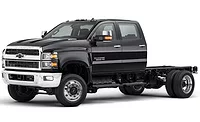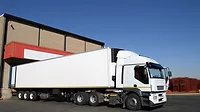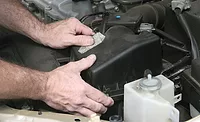A look at the issues that could affect beverage fleets in 2020
Fuel, recycling and telematics will be key variables for this five-year outlook
At the beginning of a new year, it’s customary to look forward and imagine the future. In keeping with that tradition, let’s fast-forward five years into the future to look at the challenges and opportunities that managers will face with their 2020 fleets. Resisting the temptation to go with a sci-fi approach that predicts levitating route trucks and teleported deliveries, we’ll take a more realistic approach to see how existing technologies might help beverage fleets address key issues.
Fuel
Even though the North American energy boom recently has pushed crude oil prices downward, there’s no guarantee that this won’t reverse. Total fuel cost and the volatility of pricing will continue to be a major issue for fleet managers.
Many fleets already have made key fuel-saving changes such as limiting top speeds and reducing engine idling, but a surprisingly large amount of fuel-saving procedures are available for most fleet operations that also could be utilized.
Although some fleets use after-the-fact driver coaching in an effort to improve fuel economy, few have deployed on-board driver feedback technology to deliver that coaching when and where it can do the most good. Truck original equipment manufacturers (OEMs) are just now beginning to offer fuel economy feedback technology as part of their premium driver information display offerings.
Some fleet managers have reduced their fuel consumption by optimizing routing and loading strategies to cut hundreds of thousands of miles off their annual fleet total, all while expanding their customer base. As computer software and hardware becomes more powerful, even the smallest 2020 fleet should be able to preview and compare multiple delivery scenarios to find the best balance between productivity and fuel savings.
Even if fuel prices continue downward, that still could be vexing for fleets that dispense their own bulk-purchased fuel. Nobody wants to buy a 10,000-gallon load of fuel today when it’s likely the price will be $0.10 less per gallon next week. Volatility of fuel prices will continue to be a problem. Successful 2020 fleets must address this on three fronts.
First, even the smallest fleets will need to automate the management of their fuel purchasing and dispensing with fuel management solutions, either installed in house or provided remotely as a third-party service.
Second, regardless of the dispensing strategy, small and medium distributors will need to join fuel purchasing cooperatives to match the buying power of the mega-fleets.
Third, and likely the most complex, will be the implementation of a fuel surcharge mechanism. One of the reasons this is so complex is that some jurisdictions regulate (or prohibit) delivery charges on alcohol beverages. Distributors and retailers must work together to repeal these long-outdated regulations. Although the benefit to distributors is obvious, the retailers also benefit through reduced delivery costs when fuel prices drop.
Some freight carriers and package delivery services implemented a fuel surcharge mechanism after being hit hard by the first few fuel spikes in the 2000s. In spite of much fear and uncertainty before the surcharges debuted, the concept was well accepted and mostly trouble free once it was put into place.
Given the myriad possibilities for cutting energy costs in the distribution fleet, the recently minted position of “chief energy officer” is likely to be a key member of the 2020 management team.
Recycling
Serving as the beverage industry’s “canary in a coal mine,” bottled water distributors offer one view into the very near future. Although some of the activist criticism directed at the bottled water segment could be considered anti-business agitprop, one partially valid complaint in the anti-bottled-water campaign relates to recycling. The trouble is that it’s not just bottled water that has a problem with insufficient post-consumer package recycling.
Whether this issue is solved with an industry-managed cradle-to-grave/cradle-to-cradle recycling system or through less ideal means like legislation such as a national “bottle bill” or a patchwork of local and regional bottle bills, post-consumer recycling of beverage packaging is likely to be far more prevalent by the end of this decade.
The 2020 beverage fleet, which is likely to operate across multiple jurisdictions and will almost certainly operate across multiple product segments, will meet the recycling challenge with a fleet of highly flexible trucks that can “do it all.”
Given the average replacement cycle for route trucks, a truck spec’ed and purchased tomorrow will almost certainly still be in service when the recycling paradigm changes. As such, it would be less than productive to take a wait-and-see approach regarding the potential demands recycling will have on 2020 fleets.
Onboard technology
On a positive note, the unwavering consumer demand for ever-improved communication and computing technology will continue to push the state-of-the-art standard forward at a dizzying pace, providing an increasing array of technology dividends for the business world.
Two decades ago, truly coast-to-coast wireless communications coverage required expensive and complex satellite links and still was limited to sending simple text messages. Today, terrestrial wireless communication is cheap enough that some grade-school children even carry wireless phones, the coverage is so ubiquitous that it’s tough to avoid, and enough bandwidth is available to stream HD video to a smartphone.
Five years ago, beverage fleet managers were debating whether their wireless communications platforms should be attached to the driver or to the delivery truck. Although wireless pricing in North America isn’t yet dropping as fast as the rest of the world, by 2020 the cost is likely to have dropped enough to enable multiple wireless links to the truck and driver, making the either/or debate moot.
Truck OEMs are getting the message that fleet managers expect plug-and-play provisioning for onboard terminals and telematic hardware, rather than the former chop-and-pray installation scenario. Telematics providers will need to partner with OEMs to achieve the necessarily high levels of system integrity.
“As trucks become more and more complex and add more computers to their networks, it becomes increasingly vital to choose telematic systems that are factory installed or installed by knowledgeable telematics providers that can meet OEM specifications for the hardware, software and cabling,” says Mike McQuade, chief technology officer of Seattle-based Zonar Systems, a supplier of electronic fleet management systems.
McQuade adds: “Our OEM partnerships are key to providing fleets with telematic solutions they can trust. OEMs maintain much higher expectations than just the minimum [Society of Automotive Engineers] standards. Telematic systems must meet that same standard in order to improve the safety and efficiency of fleet operations.”
Jeff Bush, a technology proponent and the national fleet purchasing manager for Nestlé Waters North America, Stamford, Conn., has described how an integrated technology scenario would work in his market. Because product consumption and demand can be unpredictable in the home and office delivery water segment, the key piece of the system would be an onboard terminal capable of autonomously tracking inventory and order status.
Bush adds: “This would enable the company’s dynamic routing strategy to improve from a daily schedule to a real-time process. We could use [radio-frequency identification] tags to track the product from the source, to the end user, [and] through the return, reuse and recycling of the bottles. In the route delivery phase of operations, this would eliminate the need for the driver to manually enter information into the truck’s onboard terminal and allow for features such as a plan view of the truck’s remaining inventory to expedite the delivery process.”
Every bit of the technology Bush describes is commercially available today. The only parts missing are seamless integration and OEM-quality installation.
Looking for a reprint of this article?
From high-res PDFs to custom plaques, order your copy today!





